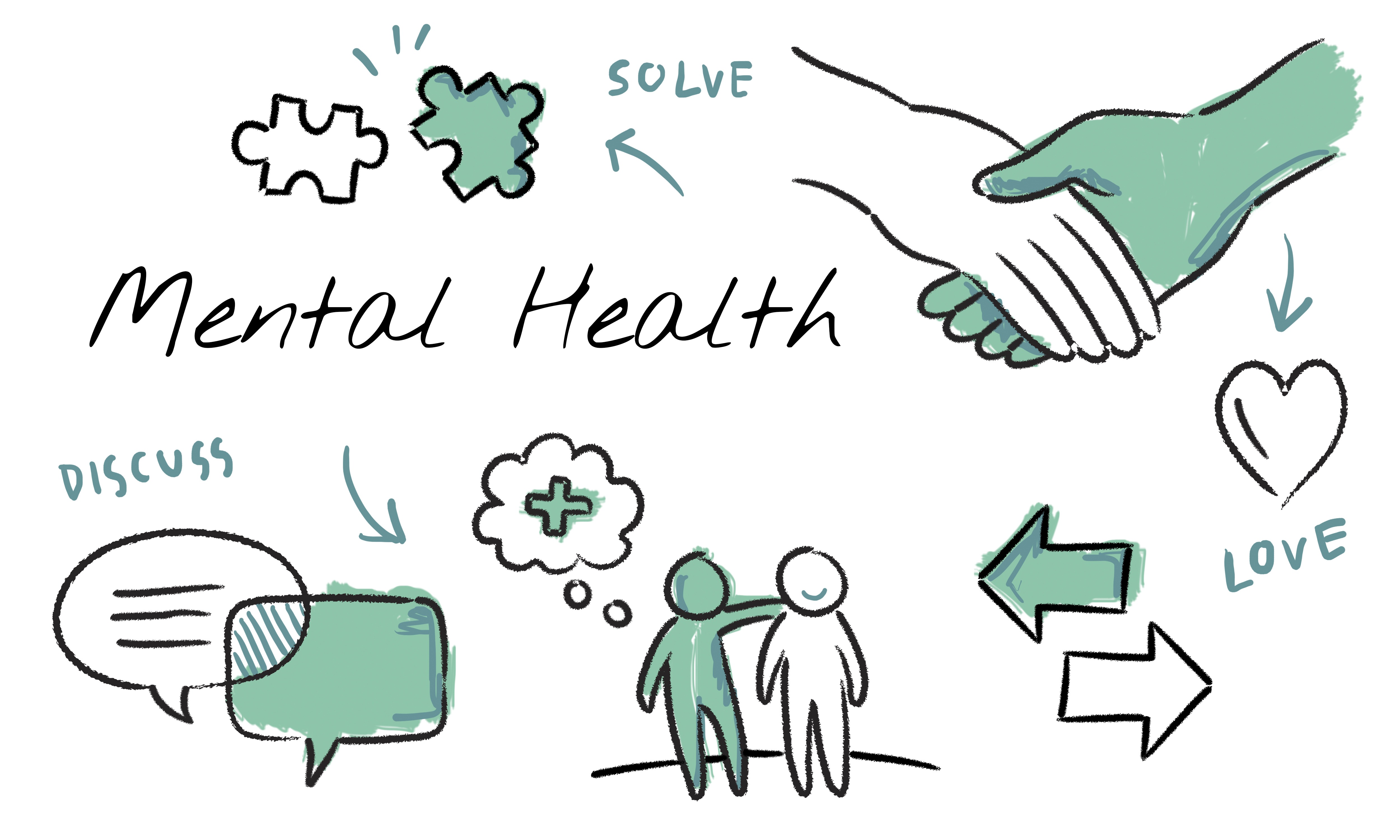Blog #4- How Can We Help Mental Health?
Mental health is such an important topic to be talked about. A mental illness is a condition that affects a person's thinking, feeling, behavior or mood. Individuals who suffer from mental health are severely impacted everyday in a negative way. Not only are they affected in a negative way but the people around them are also impacted by this. According to NAMI 1 in 5 U.S. adults experience mental illness each year, 1 in 20 U.S. adults experience serious mental illness each year, 1 in 6 U.S. youth aged 6-17 experience a mental health disorder each year and 50% of all lifetime mental illness begins by age 14, and 75% by age 24. Mental health is definitely way more common than many people may think. It is important that individuals with mental health issues seek the right help for their specific condition.

Wikipedia contributors. (2021, December 7). Mental health literacy. Wikipedia. https://en.wikipedia.org/wiki/Mental_health_literacy
Mental health in our schools is a major concern. According to the presentation about Mental Health in Schools, there are more than 50 million public school students in the United States, and nearly 5 million of those students are affected by mental health. Nearly 80 percent of these students will not receive counseling, therapy, or medication. It seems as if there are not enough staff like school nurses, counselors, school psychologists to help all of these students. Typically there are about one of these staff members in each school which is not enough to seek help for students who struggle with mental health. Perhaps students do not receive help because often students will not seek out someone for help. If there were more professional staff working in the field of mental health perhaps they would reach out to students who are struggling and find ways to help them. Most definitely mental health should be everybody's job, especially in our school districts. This would help our students and ensure that they are not alone.

NPR Cookie Consent and Choices. (2016, September 20). The Mental Health Crisis In Our Schools. https://choice.npr.org/index.html? origin=https://www.npr.org/series/494272685/a-silent-epidemic-the-mental-health-crisis-in-our-schools
As we know everyone gets stressed once in awhile and has to deal with anxiety. But for others, anxiety is something that haunts them. After listening to the NPR report it was heartbreaking to hear how Jared would refuse to go to school. Jared was diagnosed with severe anxiety. 3% of children in the U.S. deal with severe anxiety. I found it interesting how most of these children with anxiety want to take part in school activities and want to make friends. The reason why they do not is because of their anxiety holding them back and their nerves. After hearing that there is a program in North Virginia called Aspire which is specifically for student who suffer with severe anxiety I was amazed. There needs to be more programs that are specifically for students who suffer from mental health disorders. Perhaps this program "Aspire" can also have other programs that treat other mental disorders rather than just severe anxiety. Programs like this are the right path of helping students who suffer with mental health and giving them an option for help and meeting others who may suffer with the same disorder. No one should ever feel alone!

Dudley, J. (2018, May 9). Research spotlight on mental health. All IN for Health. https://allinforhealth.info/2018/05/09/research-spotlight-on-mental-health/
It is important that in our schools we learn how to support students' mental health. "About one in five children in the United States shows signs of a mental health disorder - anything from ADHD to eating disorders to suicide" (Anderson, 2016). We want our students to know that they are in a safe environment. Building relationships with each and everyone of our students is a great way for students to know they have someone to talk to and that they are in a safe place. "Here, everyone in the school has a part to play. Create a school environment of general well-being, and a climate where mental health is not stigmatized" (Anderson, 2016). This is the perfect example of making a change and making sure students do not feel alone. Each school should have a system like this and bring awareness to mental health. It is vital that students are able to open up to staff and share their feelings and thoughts. This is the first step to treating someone with mental illness. Mental health needs to be take more seriously and more needs to be done in our schools to support and help our students who are struggling and feel alone.
References
Anderson, M. (2016). Here's how schools can support students' mental health. NPREd.
Bipolar Disorder. (2021, September 22). Bipolar Disorder. https://medlineplus.gov/bipolardisorder.html
Cardoza, K. (2016). For kids, anxiety about school can feel like 'being chased by a lion'. NPREd.
Conditions. (n.d.). National Alliance on Mental Health.
Nadworny, E. & Drummond, S. (2016). A silent epidemic. National Public Radio.

Hi Erin,
ReplyDeleteI loved your blog post, and I completely agree that mental health is an important issue that needs to be spread. It is crazy to think that there are about 5 million students enrolled in public schools in the U.S. that suffer from a mental health disorder. I saw that you had also mentioned in your blog that about 80% of those 5 million students do not receive the help that they could benefit from. It was upsetting to read about Jared and his severe anxiety with going to school. I had known someone growing up who had suffered from anxiety and it is something that should be addressed within schools. Like you had also mentioned in your post, students who suffer with anxiety do want to make friends and participate in things other students participate in, but their nerves overwhelm them and prevents them from doing these things.